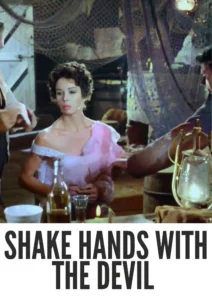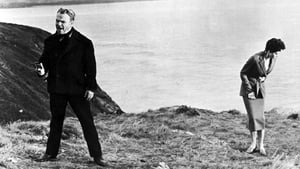Video Sources 0 Views

Synopsis

Delve into the heart of the Irish War of Independence with Shake Hands with the Devil, a gripping drama from 1959, now brilliantly colorized to immerse you in its historical intensity. Starring James Cagney and Don Murray, this film offers a compelling narrative of conflict, loyalty, and moral ambiguity against the backdrop of a nation fighting for its freedom. Perfect for history buffs, classic film aficionados, and anyone drawn to powerful stories of rebellion, this HD download presents a timeless tale of courage and sacrifice. The movie was also released under the title Shake Hands With the Devil.
Shake Hands with the Devil centers on Kerry O’Shea (Don Murray), an American medical student who becomes reluctantly embroiled in the Irish Republican Army’s (IRA) struggle against British rule. O’Shea’s life takes a dramatic turn when he witnesses an act of violence and is drawn into the IRA by James “Regan” O’Dea (James Cagney), a hardline commander with a complex past.
As O’Shea becomes increasingly involved in the IRA’s activities, he grapples with the moral implications of violence and the cost of freedom. Caught between his pacifist ideals and the brutal reality of war, O’Shea must confront his own beliefs and make difficult choices that will determine his fate. The film explores themes of loyalty, betrayal, and the human toll of political conflict. Shake Hands with the Devil is a powerful and thought-provoking drama that offers a nuanced perspective on a pivotal moment in Irish history.
The film features a stellar cast of actors who bring depth and authenticity to their roles:
-
James Cagney as James “Regan” O’Dea
-
Don Murray as Kerry O’Shea
-
Dana Wynter as Jennifer Curtis
-
Glynis Johns as Kitty Brady
-
Michael Redgrave as The Commandant
Shake Hands with the Devil falls into the genre of historical drama, with elements of war, romance, and political thriller interwoven throughout the story. Its exploration of complex moral issues and its portrayal of historical events make it a compelling and thought-provoking film.
Released in 1959, Shake Hands with the Devil provides a cinematic portrayal of the Irish War of Independence (1919-1921), a period of intense conflict between Irish nationalists and British forces. The film reflects the historical context of the time, depicting the political tensions, social unrest, and violent clashes that characterized the struggle for Irish freedom. While the film takes certain creative liberties with historical events, it offers a valuable glimpse into the complexities and human costs of armed conflict.
This colorized version of Shake Hands with the Devil has been meticulously restored to enhance the visual impact of the film. The colorization process involved extensive research to ensure historical accuracy and authenticity. By carefully selecting colors that reflect the historical period and the Irish landscape, the colorization team has brought new life to the characters and settings, making the story even more immersive for modern audiences.
-
: Michael Anderson
-
: Ivan Goff, Ben Roberts, Marian Thompson
-
: the novel by Reardon Conner
-
: Erwin Hillier
-
: Gordon Pilkington
-
: Pennebaker Productions
-
: United Artists
-
: 110 minutes
-
: MP4
-
: HD (1080p)
-
: Compatible with most devices, including smartphones, tablets, computers, and smart TVs.
Shake Hands with the Devil (1959) has been praised for its compelling performances, its nuanced portrayal of historical events, and its exploration of complex moral issues. Critics have noted the film’s ability to capture the atmosphere of the Irish War of Independence and to convey the human costs of political violence. As a powerful and thought-provoking drama, Shake Hands with the Devil remains a relevant and important film for understanding the complexities of Irish history.
-
: What is Shake Hands with the Devil about?
-
A: Shake Hands with the Devil is a historical drama about an American medical student who becomes involved in the Irish War of Independence.
-
-
: Is Shake Hands with the Devil (1959) historically accurate?
-
A: While the film takes certain creative liberties with historical events, it offers a valuable glimpse into the complexities and human costs of the Irish War of Independence.
-
-
: Is this version of Shake Hands with the Devil colorized?
-
A: Yes, this version has been professionally colorized to enhance the viewing experience.
-
-
: What makes Shake Hands with the Devil interesting for history buffs?
-
A: Shake Hands with the Devil provides a cinematic portrayal of the Irish War of Independence and explores the political tensions, social unrest, and violent clashes that characterized the struggle for Irish freedom.
-
-
: What is the download format?
-
A: The download format is MP4, which is compatible with most devices.
-
-
: What resolution is the download?
-
A: The resolution is HD (1080p), providing a high-quality viewing experience.
-
Watch Shake Hands with the Devil Today!











